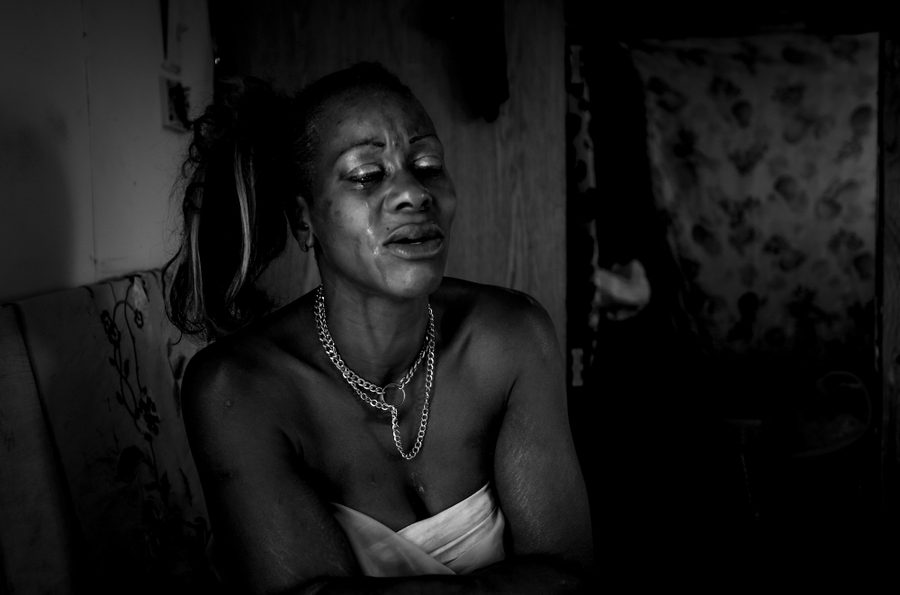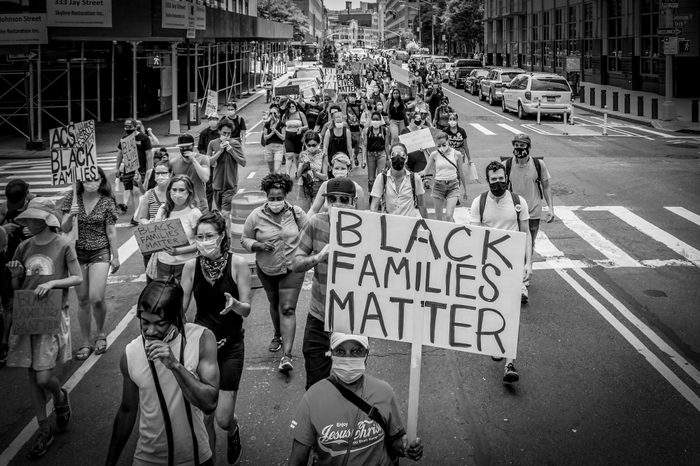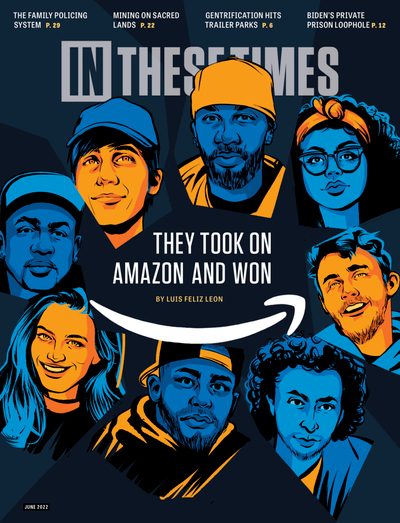How the Child Welfare System Is Silently Destroying Black Families
A single call from an anonymous tipster is all it takes for the government to take children from their families
Dorothy Roberts

The sun had just begun to rise over Manhattan on an August morning in 2013. Angeline Montauban was whispering into the phone as she crouched in the bathroom of her apartment. As her partner and their 3-year-old son slept, Montauban had tiptoed to the bathroom to call Safe Horizon, a domestic abuse hotline she had seen advertised in subway stations. She had decided it was time to stop the violence she was experiencing at the hands of her partner, and she hoped Safe Horizon could provide counseling or help her relocate with her son.
At first, the social worker who answered her call listened sympathetically to Montauban’s story. But once Montauban mentioned the couple had a little boy, the voice on the other end turned harsh and began collecting information about the family’s whereabouts.
That very afternoon, a caseworker with the city’s Administration for Children’s Services (ACS) arrived at Montauban’s apartment, explaining she was there to investigate a report of child maltreatment. At first Montauban was confused; she and her partner took excellent care of their son and had never abused him. Then she realized the social worker at Safe Horizon had contacted child protection authorities based on Montauban’s call for help.
“The minute she knocked on my door, she was building a case against me,” Montauban would recall about the ACS worker. The caseworker inspected her son’s body, as well as the entire apartment, finding no evidence of harm to the boy, yet she told Montauban that her family was under ACS supervision for the next 60 days. Twice a month, a caseworker would make an unannounced visit to inspect their home, looking for evidence that might warrant removing her son and putting him in foster care. Within a few weeks, Montauban obtained an order of protection for herself against her partner, and he moved out of their apartment. But the visits and order didn’t satisfy ACS.

In a family court hearing, ACS insisted Montauban file for an order of protection for her son against his father as well. Montauban disagreed, explaining to the judge that she wanted her son to maintain a relationship with his father, who had never hurt him.
A few days later, Montauban’s partner took their son to family court for an appointment. ACS instructed him to leave the boy at a daycare center on the first floor of the court building. It was a setup: ACS had filed a petition to apprehend Montauban’s son on the grounds that he was neglected because Montauban allegedly had allowed him to witness domestic violence and declined to file an order of protection against his father. That evening, the caseworker called Montauban to inform her that ACS had snatched her son from the family court daycare center. Her toddler was in foster care — in the custody of strangers in the Bronx.
Instead of working toward reunifying Montauban with her son, ACS moved him to several foster homes, promised the foster caretakers he would be free for adoption, and retaliated against Montauban when she expressed concerns by suspending her visits with him. When Montauban faced termination of her parental rights, it was her son’s insistence on being reunited with her that preserved their legal bond. It took Montauban five years to retrieve her son from what she calls the “labyrinth” of family policing.
A longstanding narrative has convinced the public that the child welfare system is a flawed but benevolent social service program that strengthens families and rescues children from abusive homes. Most people think of the child welfare system and the criminal punishment system as distinct parts of government. Child welfare is supposed to be based on civil law and therefore not entail the surveillance and condemnation that characterize criminal justice. Whereas police investigate crimes to arrest lawbreakers, child protection workers investigate allegations of maltreatment to keep children safe. Whereas accused defendants stand trial to determine criminal culpability and are punished if convicted, family courts determine what’s in the best interests of the child and order services for their parents.
Or so goes the official story.
In reality, the child welfare system operates surprisingly like its criminal counterpart. It is a $30 billion apparatus that monitors, controls and punishes families in the same Black communities systematically subjugated by police and prisons. It is more accurate to call it a family policing system. State-level child protective services agencies investigate the families of 3.5 million children every year, with one in three children nationwide subject to investigation by the time they reach age 18. Most Black children (53%) experience an investigation from child protective services (CPS) at some point while growing up. A 2021 study of large U.S. counties revealed that Black children had consistently high rates of investigation, reaching 63.3% of Black children in Maricopa County, Ariz.
Identifying children as at risk of maltreatment gives caseworkers the authority to probe into and regulate every aspect of a family’s life. All it takes is a phone call from an anonymous tipster to a hotline operator about a vague suspicion to launch a life-altering government investigation. Based on vague child neglect laws, investigators can interpret being poor — lack of food, insecure housing, inadequate medical care — as evidence of parental unfitness. Caseworkers search homes, subject family members to humiliating interrogation and inspect children’s bodies for evidence, sometimes strip-searching them. Caseworkers can make multiple unannounced home visits at any time of day or night and request personal information from teachers, hospitals, therapists and other service providers. In some cities, caseworkers force parents to sign blanket release forms to obtain confidential records about them and their children
These investigations not only traumatize families, but can lead to intense family regulation and years of separation between parents and children, and ultimately can result in permanent dissolution of families. Every year, CPS removes about 500,000 children from their homes — half through judicial proceedings and half through informal “safety plans.” The racial disparities seen in CPS investigations are mirrored in the national foster care population, with Black children grossly overrepresented. Although Black children were only 14% of children in the United States in 2019, for example, they made up 23% of children in foster care. More than one in 10 Black and Native children in America will be forcibly separated from their parents and placed in foster care by their 18th birthday
Recent foster care rates for U.S. children, at 576 per 100,000, are about the same as incarceration rates for U.S. adults, at 582 per 100,000. Black and Native children are also more than twice as likely as white children to experience the termination of both parents’ rights
Child welfare investigations are essentially stop-and-frisk family surveillance, without the safeguards of law and public scrutiny that are present in the criminal context. Because child welfare is classified as part of the civil legal system, CPS workers are not classified as law enforcement officers. The Fourth Amendment protection against unreasonable government searches still theoretically applies, but agencies and courts have created a child welfare exception—arguing that if the rights of family members pose a risk to children, then those Fourth Amendment protections can be waived.
The tentacles of CPS surveillance have reached across U.S. society, far beyond the walls of child welfare agencies. Family policing relies on an expansive network of information sharing that spans the school, healthcare, public assistance and law enforcement systems. By federal edict, every state must identify people who work in professions that put them in contact with children — such as teachers, healthcare providers, social services staff and daycare workers — and require them to report suspected child abuse and neglect to government authorities. These deputized agents are known as “mandated reporters.” Since states began enacting these reporting laws in the 1960s, the categories of enlisted professionals have expanded, and some states have passed “universal” reporting legislation that requires all residents, with few exceptions, to convey suspicions to the state.
As mandated reporters, providers of social services direct state surveillance against poor and low-income families — especially Black families. And using social services, receiving welfare benefits and living in public housing subject families to an extra layer of contact with these mandated reporters. Public workers are far more likely to report suspicions about their clients (essentially, because they are poor) than their counterparts in the private sector (who work with a more affluent, paying clientele). Regardless of income, healthcare professionals, for example, are more suspicious of Black families than other groups who bring their injured children to the hospital.
What’s more, mandated reporting drives parents away from the very service providers most likely to support them. Many parents are deterred from fully engaging with healthcare, educational and social service systems because mere suspicion from a service provider could lead to family separation.
Mandated reporting, then, thwarts the potential for schools, healthcare clinics and social programs to be caring hubs of community engagement that non-coercively help families meet their material needs. It also wastes millions and millions of dollars investigating baseless allegations — money that could have provided concrete assistance to children and their family caregivers. These funds would bear far better fruit for children if given directly to their parents as cash allowances or used to provide material resources that meet children’s needs.
Instead, these professionals divert struggling families into a system with the potential to destroy them.
The extensive, multisystem network of CPS informants, combined with their power to pry into a family’s personal life and space, gives CPS access to massive amounts of information ordinarily beyond the government’s reach. In recent years, CPS agencies have begun adopting novel technological tools that are expanding the scope of family surveillance even further. Governments are increasingly considering hiring technology and consulting firms — including IBM, SAS and Deloitte — to employ big databases and artificial intelligence to monitor families and automate decisions about interventions. Some of the nation’s largest child welfare departments — in California, Florida, Illinois, Pennsylvania and Texas — are using computerized risk assessment technologies to police families. The contracts (lucrative for private enterprises) not only magnify government surveillance but eat up budgets that could be used to provide material resources that families need.
For families that are screened into the family policing system, the next phase of surveillance entails their forced compliance with mandated services requested by CPS agencies and rubber-stamped by judges. These “service plans” usually have nothing to do with providing the tangible things families need, but instead consist of a list of requirements family caregivers must fulfill — or else they lose their children to foster care. Rarely are parents asked what services they would find helpful; instead, parents are asked to focus on fixing their perceived parenting deficits with skills classes and psychological counseling.
Service plans are akin to the probation orders and restrictions imposed on people convicted of crimes. In the criminal context, the violation of a single provision lands the offender in prison. In the child welfare system, parents who fail to fulfill some provision on their list in time risk having their parental rights terminated and their ties to their children irreparably disrupted.
The public accepts this extraordinary infringement on freedoms and family relationships because it masquerades as benevolence — and because it disrupts the most marginalized communities. Precisely because it seems to operate outside criminal law enforcement, the family policing system has become an extremely useful arm of the carceral state. CPS has the power to intensively monitor entire communities, all the while escaping public scrutiny and bypassing legal protections by claiming to protect children.
It’s time to tear off this veneer. The child welfare system oppresses poor communities and especially Black communities by policing families. Revealing the truth about the CPS system should force the public to question its purpose, design and impact — and to see the need to replace it with a radically reimagined approach that can actually serve families and keep children safe.




